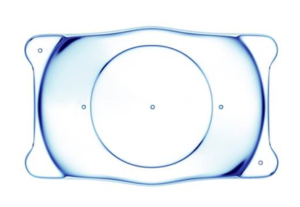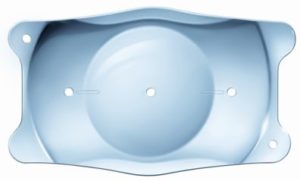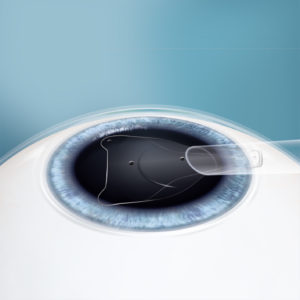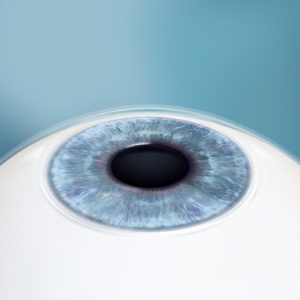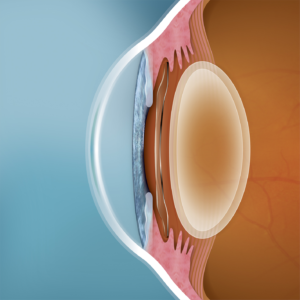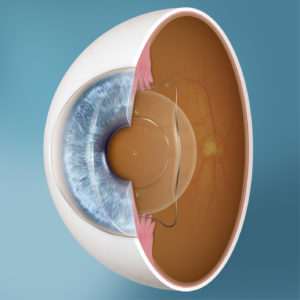Refractive Surgery
1 What is refractive surgery?
Refractive surgery is a surgical procedure used to correct the eyeís refractive defects that lead to conditions such as Short-sightedness (Myopia), Long-sightedness (Hyperopia), Presbyopia or Astigmatism. In this type of surgery, the ophthalmologist uses a microsurgical instrument and a laser to reshape the cornea in the front of the eye. This improves the way the eye focuses light rays onto the retina at the back of the eye.
The two main techniques used in laser eye surgery for vision problems are photo-refractive keratectomy (PRK) and laser assisted in-situ keratomileusis (LASIK). Both forms of laser eye surgery are performed under high magnification with an operating microscope by an ophthalmologist (eye specialist). Both are day-stay procedures and take approximately fifteen minutes.
2 What are the differences between Contoura Visoin and Conventional Lasik?
| CONTOURA VISION | CONVENTIONAL LASIK | |
| Procedure | Automated procedure with sophisticated computer software | Mechanical micokeratome (blade) procedure. |
| Removal of corneal surface irregularities | Done | Not done |
| Use of blade | Bladeless | Microkeratome blade is used |
| Final vision Clarity | More clear, free of glare | Comparatively lesser . |
WHAT ARE THE BENEFITS OF CONTOURA VISION?
- Can be done at any age between 19 years to 50 years. (confirmed after detailed eye checkup)
- Can correct Myopia (minus number), Hyperopia (plus number) as well as astigmatism (cylinder number) with precision and accuracy.
- Bladeless
- Stitchless
- No hospitalization needed- Daycare procedure
- No injection for anesthesia- done by instillation of anaesthetic eye drops.
- Dependency on glasses/spectacles/contact lenses is reduced.
- Decreased chances of glare.
- Night driving efficacy not affected.
- Painless
3 IntraLase (Blade Free) LASIK Method
What is the IntraLase Method?
The IntraLase Method is a 100% blade ñ free approach to creating your LASIK flap ñ the thin flap of tissue that the doctor flods back in order to perform your LASIK procedure. The IntraLase Method can only be performed using the IntraLase Laser.
Traditionally, doctors have used an instrument called a microkeratome for the creation of LASIK flaps. The microkeratome is a hand held blade that moves across the eye, cutting the LASIK flap as it goes. LASIK is extremely safe, but if complications do occur, the microkeratome is frequently the cause.
The IntraLase Method, by contrast, enables your doctor to create an individualized LASIK flap without a blade ever touching your eye.
How Does it Work?
With the IntraLase Method, tiny pulses of laser light, a quadrillionth of a second each, pass harmlessly thorough the outer portion of your cornea and form a uniform layer of microscopic bubbles just beneath the surface of your eye. The exact dimensions of this layer of bubbles are determined by your doctor based on whatís best for your eye, and are computer controlled for maximum precision ñ things that are not possible with a hand held blade. The IntraLase flap creation process takes about 15 to 20 seconds per eye and a total of 10 minutes for the entire LASIK procedure.
Is it Right for Me?
If youíre looking for a blade free treatment that virtually eliminates the most severe sight threatening complications, the answer is YES. The IntraLase Method also delivers outstanding results ñ it has been shown to improve outcomes for more patients. Conventional LASIK was considered as a reliable option for reducing glasses /spectacles dependency. In recent times (past 15 years) however CONTOURA VISION has emerged as a safer and more precise option in comparison with conventional LASIK. In addition to being technically advanced, CONTOURA VISION has another major advantage of providing consistently accurate results.
The surgery is completely bladeless and has very less post-operative complications. Both the eyes are operated on same day and the entire procedure lasts for about an hour with the patient being discharged home same day of surgery. Anaesthesia can be achieved by topical anaesthetic drops hence no need for anaesthetic injection around eyes.
DOES CONTOURA VISION CAUSE ANY PERMANENT CHANGES IN THE EYE?
CONTOURA VISION minimizes the dependency on glasses/contact lenses by permanently removing tissue (ablating in proportion to the refractive error) from cornea of the eye. The effects of CONTOURA VISION are permanent. As age advances, there may occur age related changes in the lens of the eye causing blurring of vision, if this occurs and the patient experiences significant discomfort then an enhancement procedure may be needed.
4 WHEN CAN I REJOIN WORK AFTER SURGERY?
Work can be resumed 7 days after the surgery.
5 WHAT OTHER OPTIONS ARE AVAILABLE IF I AM NOT ELIGIBLE FOR CONTOURA VISION/LASIK?
Implantable Collamer lens (ICL) implant is an option available for reducing dependency on glasses/contact lenses for patients who are not eligible for Contoura vision or Lasik surgery.
Eye Care Learning
Blade Free Laser Cataract Surgery
OFFERING PATIENTS A CUSTOMISED FEMTO LASER ASSISTED CATARACT PROCEDURE WITH OUTSTANDING PRECISION.
THE CATALYS LASER CATERACT PROCEDURE
- Customised Treatement with advanced 3D imaging
- Laser precise treatment
- Gentle approach to surgery
- More Safety
DO CONTACT US IF YOU HAVE ANY SPECIFIC QUESTIONS. WE WILL BE GLAD TO HELP YOU

EVO ICL
EVO ICL
Imagine Your Life with Visual Freedom
EVO ICL , also known as the Implantable Collamer Lens, is a type of refractive procedure to help correct the most common visual problem, myopia. Simply put, EVO ICL is a removable lens implant that is an attractive alternative to LASIK and other refractive procedures.
The STAAR Surgical ICL, also known as the Implantable Collamer® Lens, corrects common vision problems, like nearsightedness, astigmatism, and farsightedness.
EVO ICL is a soft, flexible lens that is positioned in your between the iris (coloured part of the eye) and your natural lens.
EVO ICL can be described as additive vision correction. Unlike other procedures, the EVO ICL procedure does not remove the corneal tissue, but works in harmony with your natural eyes to provide exceptional quality of vision.
THE EVO ICL PROCEDURE
About EVO ICL
EVO Visian ICL , also known as the Implantable Collamer Lens, is a type of refractive procedure to help correct the most common visual problem, myopia. Simply put, EVO ICL is a removable lens implant that is an attractive alternative to LASIK and other refractive procedures.
Proven Performance, Outstanding Outcomes
- 99.4% of patient satisfied with Clinical performance
- 1,000,000 + ICLs worldwide implanted
- 20+ years of premium ICL performance
Why People Choose EVO ICL?
- Sharp, Clear Vision
- Superb Results. 99.4% of patients would have ICL procedure again.
- Excellent Night Vision. Many patients achieve excellent night vision with Visian ICL.
- Quick Results. Often times, patients can achieve improved vision immediately following procedure.
- Great for Thin Corneas. Many patients are excluded from other forms of vision correction because of thin corneas, but not with EVO ICL.
- Great for High Nearsightedness. Visian ICL is able to correct and reduce nearsightedness (myopia) of up to -20D.
Compare ICL and LASER procedure for Spectacles Removal
When you compare EVO ICL with other laser vision correction procedures the difference is clear.
No Dry Eye Syndrome
Only EVO ICL ’s proprietary lenses are made of biocompatible Collamer. That means our lens material works in harmony with the natural chemistry of your eye and body.
A Removable Option
Should your prescription update or if other vision needs arise, if you and your doctor decide, your doctor can simply remove our lens.
Quick Procedure & Recovery
Most procedures are completed within 20-30 minutes or less. With a minimally invasive procedure, many achieve improved vision nearly immediately.
Celebrities with Evo Visian ICL
Eve Torres Gracie
Jiu-Jitsu Instructor, Former WWE Diva, Mom
“I feel like a big part of health is using what your body already has. Visian ICL is in line with that because it’s keeping your eye completely intact. My eye is still my eye”.
WATCH EVE’S STORY
Phil Torres
Entomologist, TV Show Host
“I had my first opportunity to put my Visian ICL eyes to the test recently in the Brazilian Rainforest, and it couldn’t have been more exciting to be able to spot rare species better than ever”
WATCH PHIL’S STORY
What Can I Expect During The ICL Procedure?
Easy 10-20 Minute Procedure
Before you schedule your ICL appointment your doctor will perform a series of standard tests to measure your eye’s unique characteristics for the procedure. If you are farsighted, your doctor may recommend or schedule an additional pre-op procedure.
Frequently asked questions
DOWNLOAD Patient education brochure
Exactly where is the EVO ICL placed in the eye?
EVO ICL is placed behind the iris and in front of the eye’s natural lens so it’s undetectable to any observers. Only a trained doctor using special instrumentation will be able to tell that vision correction has taken place.
What is the history of the ICL?
Over the past 20 years, ICLs have been implanted in over 1,000,000 eyes worldwide.
Why is Collamer such a great material for the eye?
The Collamer lens is soft, pliable, biocompatible and offers UV protection.
Are patients happy with the EVO ICL?
Of patients having the EVO ICL procedure, 99.4% would choose to have the EVO ICL procedure again. 1
Can the EVO ICL be removed in the future if my prescription changes?
Yes! The EVO ICL offers treatment flexibility.
If your vision changes dramatically, the lens can be removed.
How long can EVO ICL stay in the eye?
The EVO ICL is designed to stay in your eye permanently but can be removed to keep pace with advancing technology and your future needs.
Does the procedure remove tissue from my eye?
No, the EVO ICL is inserted gently in the eye with no removal of corneal tissue.
Can the EVO ICL dry out or get dirty like a contact lens?
The EVO ICL avoids such problems experienced with traditional contact lenses. It is designed to remain in place inside the eye, without maintenance. A routine, annual visit with an eye doctor is recommended to make sure everything remains safe and effective.
How the EVO ICL Corrects Nearsightedness and Astigmatism
EVO ICL functions to focus light properly back onto the retina in a similar way glasses and contact lenses do. The EVO ICL is placed into a space of the eye directly behind the iris (the coloured part of the eye) and in front of the natural lens. In this position, the EVO ICL functions to focus light properly onto the retina helping create clear distance vision.
*ICL lenses intended to treat farsightedness are not EVO and require two additional tiny opening in the coloured portion of your eyes to ensure there is proper fluid flow after the ICL is implanted. #






